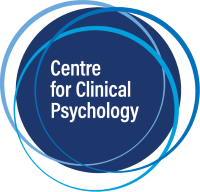Many clinicians fear that by treating PTSD they may push a client too far and trigger strong emotional reactions that lead to suicidal ideation, and an attempt.
The increased risk for suicide in those experiencing from PTSD is well known for example, Gradus et al., 2010 studied of a large sample of the Danish population (n = 208,918). They reported persons with PTSD had 5.3 times the rate of death from suicide than persons without PTSD. This included after adjustment for gender, age, marital status, income, and pre-existing depression diagnoses. Similarly, several others have noted an elevated suicide risk in those experiencing chronic PTSD; Tarrier & Gregg (2004), Krysinska & Lester (2010), Pompili et al., (2013).
However, does this increased risk mean that there will be bad outcomes if we treat the PTSD?
The possibility exists that if we treat the PTSD we may reduce the suicidal ideation. Roberge et al. (2021) examined the effect of using CPT to treat veterans experiencing PTSD and suicidal ideation. The participants in her groups study screened well above the PCL-5 threshold (33) for PTSD, with a mean PCL-5 score of 50.70 (SD = 13.77).
The sample characteristics included:
- 42% current suicidal ideation
- 5% history of attempted suicide
- 46% low risk
- 10% acute risk of suicide
Roberge and colleagues 2021 also used two different categorisations methods to define elevated and low risk. These methods considered combinations of the following factors:
- history of suicide attempts
- absence of attempt
- recent and/or current suicidal ideation
- absence of recent and/or current suicidal ideation
They determined that most veterans who engaged in CPT were at increased risk for suicide as determined by these clinical factors. Given a picture says a thousand words this graph from the study shows the effects of CPT treatment for the various groups over a course of CPT for PTSD

Other important finding that Roberge and colleagues 2021 reported included;
- High risk veterans were just as likely to complete treatment as low risk veterans.
- Suicide risk groups experienced similar levels and rate of PTSD symptom change over the course of treatment.
- On average, veterans reported clinically significant reduction of PTSD symptoms.
Of particular interest to clinicians concerned about risk is Roberge and colleagues’ statement about treatment safety.
“Three veterans (1.0%) engaged in suicidal behaviour (i.e., suicide attempt) between treatment initiation and the chart review process (i.e., August 2020). Of these veterans, all endorsed suicidal ideation at the time of treatment initiation, and two had prior histories of suicide attempts. Two veterans’ attempts occurred approximately seven months after CPT, whereas the other veteran’s attempt occurred in the month following their first and only CPT session. According to local records, to date, no veterans who engaged in CPT between 2016 and 2018 have died by suicide.” (p.4)
Furthermore, there are studies supporting the reduction in suicidal ideation through CPT (Holliday et al., 2018; Resick et al., 2017). It should follow that less ideation means less suicidal behaviour.
Summary
CPT for PTSD can be safely and effectively delivered to individuals with increased risk for suicide and appears to result in a reduction in ideation as well as PTSD symptoms.
References
Holliday, R., Holder, N., Monteith, L. L., & Surís, A. (2018). Decreases in suicide cognitions after cognitive processing therapy among veterans with posttraumatic stress disorder due to military sexual trauma: A preliminary examination. Journal of Nervous and Mental Disease, 206(7), 575–578. https://doi.org/10.1097/NMD.0000000000000840
Jaimie L. Gradus, Ping Qin, Alisa K. Lincoln, Matthew Miller, Elizabeth Lawler, Henrik Toft Sørensen, Timothy L. Lash, Posttraumatic Stress Disorder and Completed Suicide, American Journal of Epidemiology, Volume 171, Issue 6, 15 March 2010, Pages 721–727, https://doi.org/10.1093/aje/kwp456
Krysinska, K., & Lester, D. (2010). Post-traumatic stress disorder and suicide risk: a systematic review. Archives of suicide research : official journal of the International Academy for Suicide Research, 14(1), 1–23. https://doi.org/10.1080/13811110903478997
Pompili, M., Sher, L., Serafini, G., Forte, A., Innamorati, M., Dominici, G., Lester, D., Amore, M., & Girardi, P. (2013). Posttraumatic stress disorder and suicide risk among veterans: A literature review. Journal of Nervous and Mental Disease, 201(9), 802–812. https://doi.org/10.1097/NMD.0b013e3182a21458
Resick, P. A., Wachen, J. S., Dondanville, K. A., Pruiksma, K. E., Yarvis, J. S., Peterson, A. L., & Mintz, J. (2017). Effect of group vs. individual cognitive processing therapy in active-duty military seeking treatment for posttraumatic stress disorder: A randomized clinical trial. JAMA Psychiatry, 74(1), 28–36. https://doi.org/10.1001/jamapsychiatry.2016.2729
Roberge, E.M., Harris, J.A., Weinstein, H.R., & Rozek, D.C. (2021). Treating veterans at risk for suicide: An examination of the safety, tolerability, and outcomes of cognitive processing therapy. Journal of Traumatic Stress.
Tarrier, N., & Gregg, L. (2004). Suicide risk in civilian PTSD patients–predictors of suicidal ideation, planning and attempts. Social psychiatry and psychiatric epidemiology, 39(8), 655–661. https://doi.org/10.1007/s00127-004-0799-4



